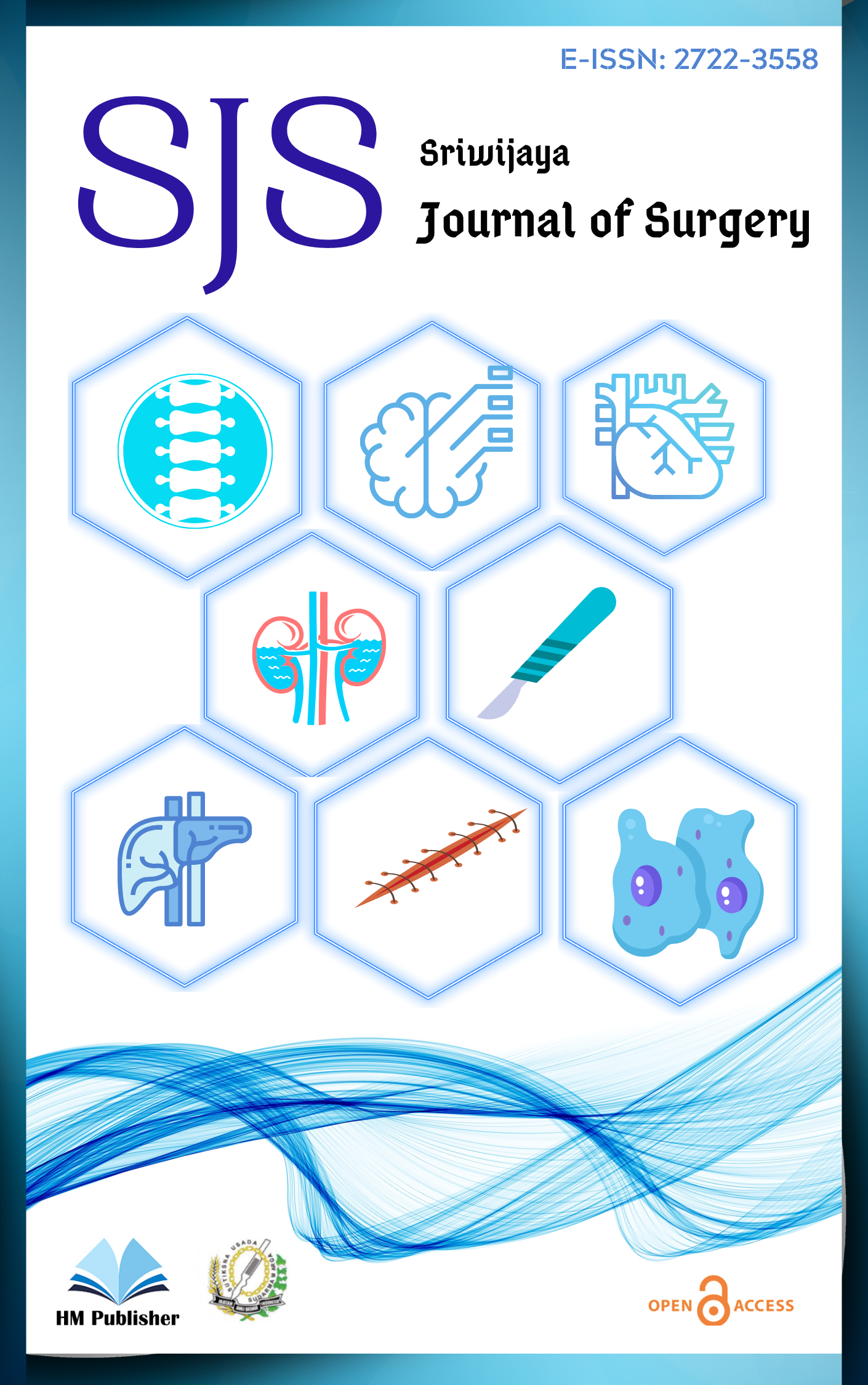Main Article Content
Abstract
Introduction: Pars plana vitrectomy (PPV) is a cornerstone surgical treatment for rhegmatogenous retinal detachment (RRD). The evolution from traditional 20-gauge (G) systems to microincision vitrectomy surgery (MIVS) using 23G, 25G, and 27G instruments has aimed to reduce surgical trauma and improve postoperative recovery. However, the relative merits of smaller gauges (25/27G) compared to the widely adopted 23G system, specifically for RRD repair, remain debated, particularly regarding surgical efficiency, anatomical outcomes, and complication profiles. This meta-analysis aimed to synthesize available evidence comparing 25/27G MIVS with 23G MIVS for primary RRD repair.
Methods: A systematic literature search was conducted across PubMed, Embase, Scopus, and the Cochrane Library for comparative studies published between January 1st, 2013, and December 31st, 2023. Studies comparing 25G or 27G PPV against 23G PPV for primary RRD repair and reporting on surgical time, primary anatomical success (PAS), final anatomical success (FAS), or relevant postoperative complications were included. Data were extracted independently by two reviewers. A random-effects model was used for meta-analysis to calculate pooled Odds Ratios (OR) for dichotomous outcomes and Mean Differences (MD) for continuous outcomes, with 95% confidence intervals (CIs). Heterogeneity was assessed using the I² statistic.
Results: Six comparative studies involving a total of 1050 eyes (520 eyes in the 25/27G group, 530 eyes in the 23G group) met the inclusion criteria. Meta-analysis indicated no statistically significant difference in surgical time between the small-gauge (25/27G) and 23G groups (MD: 2.15 minutes, 95% CI: -1.80 to 6.10, P=0.28; I²=65%). Primary anatomical success rates were comparable between groups (OR: 0.92, 95% CI: 0.65 to 1.30, P=0.63; I²=15%). Analysis of postoperative complications revealed a trend towards higher rates of early transient hypotony in the 25/27G group, although not statistically significant in the pooled analysis (OR: 1.85, 95% CI: 0.90 to 3.80, P=0.09; I²=30%). Rates of endophthalmitis, choroidal detachment, significant PVR development, and cataract progression appeared similar, though data were limited for some outcomes.
Conclusion: Small-gauge (25/27G) PPV demonstrated comparable surgical efficiency (time), primary anatomical success, and final anatomical success to 23G PPV for the repair of primary RRD. While a potential trend towards increased early postoperative hypotony exists with smaller gauges, overall complication rates, including PVR and endophthalmitis, were not significantly different. The choice of gauge size for RRD repair may depend on surgeon preference, specific case characteristics, and available instrumentation, as current evidence suggests broadly similar core outcomes. Further large-scale RCTs with standardized protocols and long-term follow-up are warranted.
Keywords
Article Details
1. Authors retain copyright and grant the journal right of first publication with the work simultaneously licensed under a Creative Commons Attribution License that allows others to share the work with an acknowledgement of the work's authorship and initial publication in this journal.
2.Authors are able to enter into separate, additional contractual arrangements for the non-exclusive distribution of the journal's published version of the work (e.g., post it to an institutional repository or publish it in a book), with an acknowledgement of its initial publication in this journal.
3.Authors are permitted and encouraged to post their work online (e.g., in institutional repositories or on their website) prior to and during the submission process, as it can lead to productive exchanges, as well as earlier and greater citation of published work.

